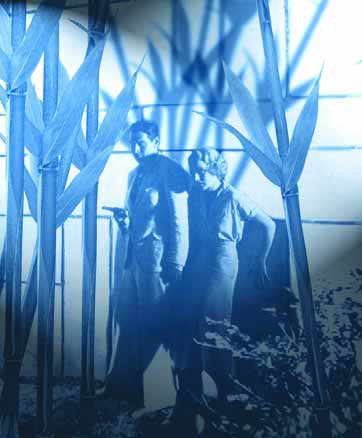ARTICLES
Advance Search
Aquatic Health
Aquatic Health, Fitness & Safety
Around the Internet
Aquatic Culture
Aquatic Technology
Artful Endeavors
Celebrity Corner
Life Aquatic
Must-See Watershapes
People with Cameras
Watershapes in the Headlines
Art/Architectural History
Book & Media Reviews
Commentaries, Interviews & Profiles
Concrete Science
Environment
Fountains
Geotechnical
Join the Dialogue
Landscape, Plants, Hardscape & Decks
Lighter Side
Ripples
Test Your Knowledge
The Aquatic Quiz
Other Waterfeatures (from birdbaths to lakes)
Outdoor Living, Fire Features, Amenities & Lighting
Plants
Ponds, Streams & Waterfalls
Pools & Spas
Professional Watershaping
Structures (Editor's Notes)
Travelogues & History
Water Chemistry
WaterShapes TV
WaterShapes World Blog
Web Links
Around the Internet
Aquatic Culture
Aquatic Technology
Artful Endeavors
Celebrity Corner
Life Aquatic
Must-See Watershapes
People with Cameras
Watershapes in the Headlines
The issue you hold in your hands marks the completion of WaterShapes' fifth year in print - a milestone that I can't believe is happening so soon. It doesn't seem all that long ago that
Long a fixture in San Francisco's Golden Gate Park, the Conservatory of Flowers is one of the most photographed structures in a city famous for picturesque beauty. At 125 years old, the facility is the oldest surviving public conservatory in the western hemisphere. Originally built in 1878 and then rebuilt after a devastating fire in 1883, it's also an architectural and engineering treasure - an extremely rare example of a prefabricated Victorian-era structure that had withstood the test of time. In 1995, however, a severe storm caused extensive damage and led city building officials to deem it unsafe for public use. Despite that decision, a dedicated group of paid staff and volunteers doggedly maintained and managed the site and its plants in a gallant effort to stave off further degradation, all with the hope that someday the Conservatory would be restored. They bit off no small challenge, as many of the facility's "botanical residents" are difficult and expensive to maintain - including a 100-year-old Philodendron with five-foot tall leaves that fills much of the space beneath the Conservatory's towering central glass dome. The ongoing campaign to save
Since the dawn of civilization, it has stood as the single most enduring of all artistic media: From representations of mythological characters and historic events to applications as purely architectural forms and fixtures, carved stone has been with us every step of the way. As modern observers, we treasure this heritage in the pyramids of Egypt and Mesoamerica. We see it in the Parthenon in Athens, in the Roman Colosseum and in India's Taj Mahal - every one of them among humankind's finest uses of carved stone in the creation of monuments and public buildings. As watershapers in particular, we stand in awe before the Trevi Fountain in Rome, the glorious waterworks of the Villa d'Este and the fountains of Versailles, three of history's most prominent examples of carved stone's use in conjunction with water. But you don't need to
It's striking and even awe-inspiring to observe the ways in which water can shape a desert. Probably the most spectacular example of this phenomenon to be found anywhere on the planet - and unquestionably the most prominent hydrological feature of Arizona's landscape - is the winding course the Colorado River takes through the Grand Canyon it created. The terrain surrounding Pointe South Mountain Resort in Phoenix is another special creation that draws much of its character and interest from the presence of
The Delicate Art of Dancing with Porcupines by Bob Phillips (Regal Books, 1989) may have one of the most unusual titles I've ever seen, but fortunately the quirky name didn't stop from picking it up several years ago. At this point, I've read it multiple times and have taken to presenting it quite often as a gift to friends and associates. I like it so well myself because the text applies in practical and profound ways to my work as a watershape designer. I share it with others because it has had something to say about every aspect of my life and can do the same for them, too. A widely published marriage and family counselor, Phillips is best known for this small book (just 160 pages) in which he examines in wonderfully clear and concise detail what he calls "social style." The idea is that people generally fall into categories having to do with
The renovation project I've been discussing for the past couple of issues will be on hold for a few weeks as we await the arrival of a shipment of custom tile from Italy. We'll pick up with that project once work resumes. In the meantime, let's begin coverage of what would have been the next project for "Details" - discussions that will carry us through a good part of the year to come. Everything about this Pennsylvania watershape has been impressive, right from the start. Simply put, it's one of the biggest and most elaborate projects I've ever tackled. As designed, the watershape will
When we think about how the environments we create are used, the first image that probably comes to mind is one of people enjoying themselves in or near the water on a beautiful, warm afternoon. That's natural - and a vision that's a big part of the watershape experience we set up for our clients - but it ignores the other half of the day when our clients are left to themselves with our work. The fact is that watershape owners are mostly working people who spend their days away from home earning their daily bread. So despite the fact that we build these things
'The way a team plays as a whole determines its success. You may have the greatest bunch of individual stars in the world, but if they don't play together, the club won't be worth a dime.' -- Babe Ruth How many watershaping projects are





















